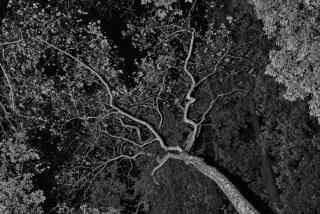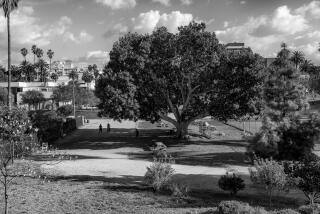Coast live oak
- Share via
(LA)[ QUERCUS AGRIFOLIA ]
Stand beneath a live oak and notice the beautiful, sprawling infrastructure of its branches. Beyond the massive, gray-barked limbs of this common coastal species is some convoluted architecture, an arrangement of leaves superbly adapted to capture sunlight passing through the canopy. Small, cupped leaves on the outer branches contain two to three layers of cells that work like nets, snatching photons as they stream past. Particles of sunlight that escape this net and penetrate to the tree’s interior encounter a second tier of large, flat leaves. These “shade leaves” are less efficient at catching sunlight because they are only one cell layer thick, but their broad surfaces cover a much larger area. The tree grows strong feeding on solar energy.
NATURAL HISTORY
In the spring, each oak produces thousands of delicate hanging catkins. These yellowish flowers are the male part of the tree’s reproductive effort, producing copious pollen to disperse in the wind and fertilize female flowers that become acorns.
KEY CHARACTERISTICS
It is perhaps the tree most characteristic of coastal valleys and foothills from Mendocino to San Diego, recognized by its convex dark-green leaves with spiny margins.






